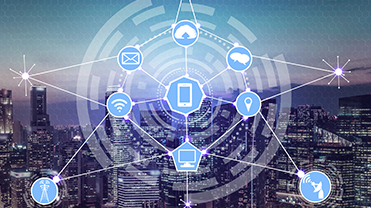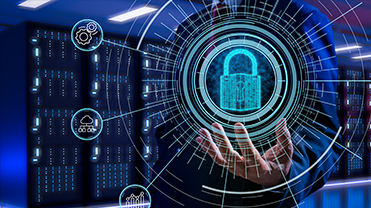IoT gateways: connecting the world
of IoT devices in smart buildings
Modern-day smart buildings are powerful, capable of higher levels of energy efficiency, and are more intelligent than their yesteryear versions. To get here, however, these buildings have had to deploy hundreds, if not thousands, of sensors and devices – making data management so much more difficult. Researchers predict that this volume would rise, and the market for connected devices – including devices in smart buildings – would eventually number over 40+ billion by 2025. To make sense of the barrage of continuously generated data, a centralised hub is needed, one that seamlessly connects all these devices.
Enter the Internet of Things (IoT) gateways for smart buildings.
IoT gateways – the bridge linking intelligent buildings and IoT devices
IoT gateways
These are the physical hardware and software programs that act as centralised hubs for IoT sensors and devices. Data from sensors, controllers, and intelligent devices pass to the cloud through the IoT gateways, thus streamlining device communications and management.
functions and complexity
In simple terms, an IoT gateway functions much like a WiFi router. However, these gateways are more complex than WiFi routers, as they support multiple communication protocols used by an array of IoT devices, including Bluetooth, Zigbee, BACnet, Modbus, and more. Plus, where before the data only flowed in one direction – from the devices to the cloud – now bi-directional data flows are quite common. Another reason for their complexity is that IoT gateways need to direct data from each device to their appropriate locations; data from building sensors and controllers might need to go to a SaaS vendor operated by a cloud-based security portal, whereas data from industrial sensors might need to go to a database, say in the AWS cloud.
why do we need them?
IoT gateways do more than just tie all IoT systems together; their benefits are myriad, and help every stakeholder in the building automation industry, both in short and long term.
faster response time
IoT gateways pre-process data at the edge sending the summarised analysis of the aggregated data to the cloud, thereby quickening the response time.
energy conservation
The rapidly burgeoning population and equally fast-growing urbanisation efforts mean energy conservation efforts need to be a priority. Data collection and analysis afforded by IoT gateways make close monitoring of energy usage in building systems a reality. Sensors’ data – that might have previously been lost among all the other data flowing in – can now be parsed and mined to adjust light levels, heating, and cooling to save energy. The data can also be used for future predictions of energy usage, increasing energy savings to a greater extent.
optimised cost for data transmission
The reduced volume of data moving into the cloud, means building owners and managers can quickly analyse and act on information, as well as save costs on the transmission of data, its storage, and even analysis.
seamless interoperability
Building automation systems (BAS) might employ IoT devices from different manufacturers, which operate on different communication protocols and thus not be able to communicate with each other directly. An IoT gateway becomes the perfect hub to gather all the data in different protocols or ‘languages’, and translate them to allow smooth inter-device communication for better operational efficiency.
high security
While this situation is improving, the truth is that IoT devices are very vulnerable to security attacks. As recently as 2020, researchers found a group of vulnerabilities – 19 in total – originating from a software stack developed by a US-based software company. Dubbed Ripple20, this code was widely used by vendors from across the world, from small organisations to Fortune 500 companies, and affected millions (or even more; the vulnerabilities are hard to count because of the sheer volume of distribution) of IoT devices in a wide range of fields. IoT gateways, which sit between the cloud and the devices, can include integrated security functionality to protect these vulnerable systems from cyber attacks.
Want more advice on how to safeguard your IoT devices against vulnerabilities? Read our article on IoT Device Security – 5 Key Measures For Device Manufacturers.
IoT gateways at the edge
How do IoT gateways perform more efficiently, rapidly, and cost-effectively?
Simple – they function at the Edge!
Located in close proximity to where the data is being generated, an IoT edge gateway can process data
at greater speeds and volumes because of this nearness, leading to better actionable insights in real time.
‘Edging’ away the competition with Softdel’s EdificeEdge IoT gateway platform
EdificeEdge, built on top of Intel’s powerful compute platform, aggregates data from multiple IoT-enabled devices including sensors, actuators, controllers, lighting control systems, thermostats, HVAC systems, and other building equipment. Our platform does more than just simple data collection. It efficiently parses and runs analytics at the edge to help building owners, operators, and facility managers find the intelligence trapped in their IoT assets. This feature-rich middleware platform won the “Enterprise IoT Management Innovation Award” the IoT Breakthrough Awards, and is already revolutionising the world of smart buildings, to help build a greener planet.







